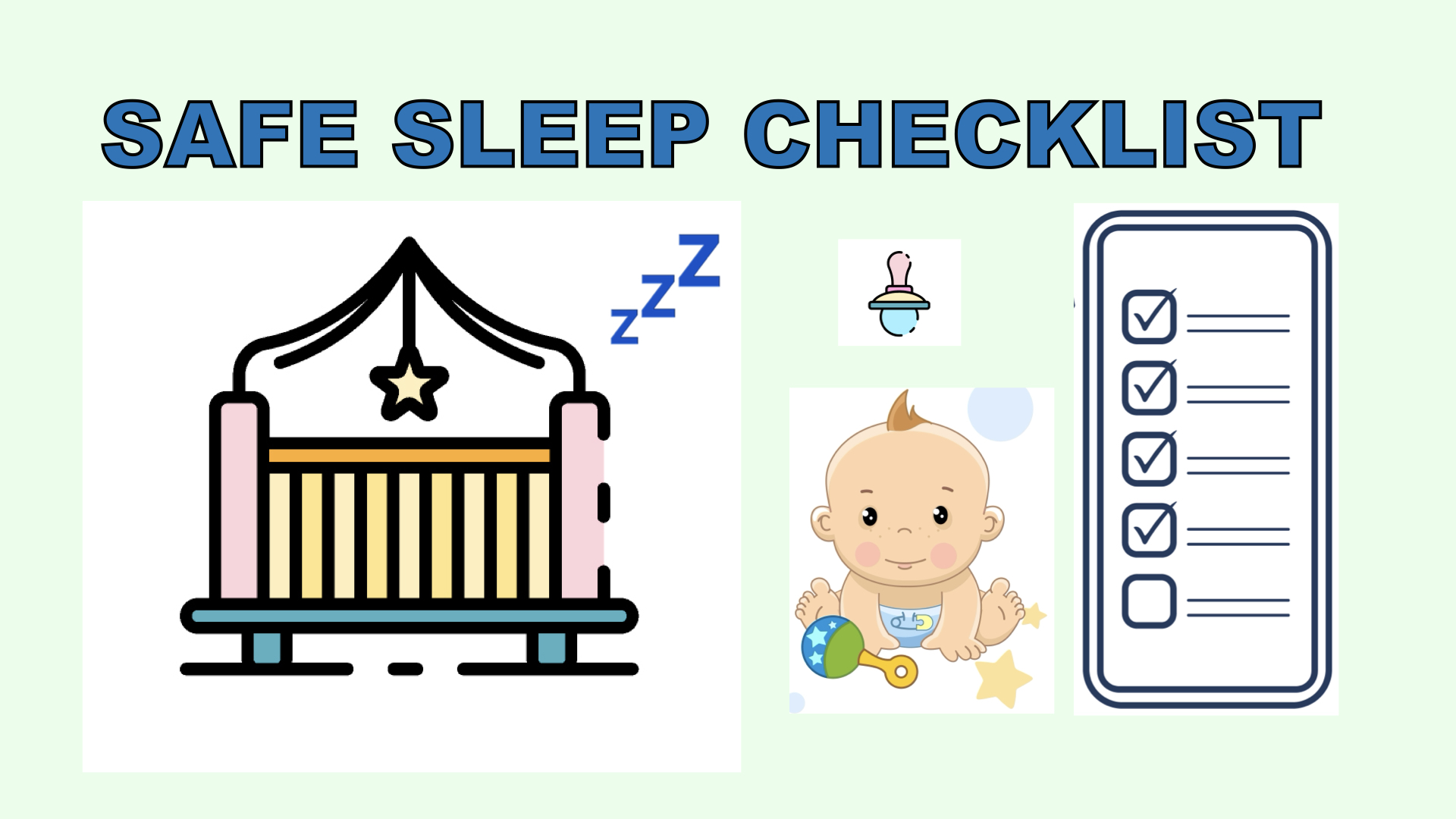If there’s one thing that’s been keeping me up at night (even before the baby arrives), it’s worrying about safe sleep.
I’ve read enough to know that newborns need a very specific sleep setup to be safe, but honestly? The advice can feel overwhelming fast. So I’ve been working on a simple checklist—something I can actually follow without spiraling.
Here’s the safe sleep basics I’m learning and planning to follow as a first-time (and slightly panicked) parent:
(I’m no expert myself so I’ve linked helpful professional resources at the bottom of this post that I used to learn this myself).
1. Always Put Baby to Sleep on Their Back
What I’ve learned:
- Placing a baby on their back to sleep (every time, naps and nighttime) reduces the risk of SIDS (Sudden Infant Death Syndrome).
- Side-sleeping and tummy-sleeping are risky until the baby can roll over themselves.
This is one rule I’m committing to 100%.
2. Use a Firm, Flat Sleep Surface for your newborn
Safe setup tips I’m following:
- A crib, bassinet, or portable play yard with a firm mattress
- Only use the mattress that comes with the crib (no extra padding)
- Cover the mattress with a tight-fitting crib sheet—and nothing else
(See our Baby Registry list for ideas of what to get)
3. Keep the Crib Empty (Yes, Totally Empty)
I’ll admit: I’ve seen plenty of Pinterest-perfect cribs full of stuffed animals and pillows. But nope.
What’s safe:
- No blankets
- No bumpers
- No stuffed toys
- Just the baby, swaddled or in a sleep sack if needed
I’m reminding myself: less is safer. (You can still keep baby at a comfortable temp. See below room temperature suggestions)
4. Room Share, But Don’t Bed Share
What the experts say:
- Baby should sleep in the same room as parents—but not in the same bed
- Keep the bassinet or crib within arm’s reach for at least the first 6 months
This setup helps reduce the risk of SIDS and makes nighttime feeds easier too.
5. Control the Temperature for your sleeping baby
Good to know:
- Babies sleep safest at a room temperature between 68-72°F (20-22°C)
- Dress the baby in one more layer than an adult would wear to be comfortable
I’m adding a simple room thermometer to our nursery list to help with this.
6. Offer a Pacifier at Sleep Time
Things to know:
- No need to force it if the baby doesn’t want it
- It’s fine if the pacifier falls out after the baby falls asleep
Another little trick for peace of mind.
7. Avoid Overheating when your baby is sleeping
Overheating is another risk factor I’m watching out for.
What I’m planning:
- Light layers instead of heavy blankets
- Skipping the thick hats and mittens once indoors
- Checking baby’s chest (not hands or feet) to make sure they’re warm but not sweaty
- Using the room thermometer as mentioned above
Final Thoughts on Sleep safety (From One Nervous Parent-to-Be to Another)
Safe sleep honestly felt overwhelming when I first started reading about it. But breaking it down into simple, doable steps makes it feel a lot less scary.
This checklist isn’t about being perfect—it’s about creating the safest, simplest environment we can.
If you’re feeling nervous too, you’re not alone. Every step we take to learn and prepare is already making a huge difference.
(Deep breath. We’ve got this.)
Resources:
- CDC Safe Sleep Recommendations
- Mayo Clinic: SIDS Prevention Tips
- NIH Study of Pacifiers Reducing SIDS
(Want to Read More? Try this First Time Parent Survival Guide)
